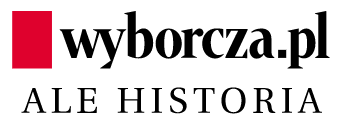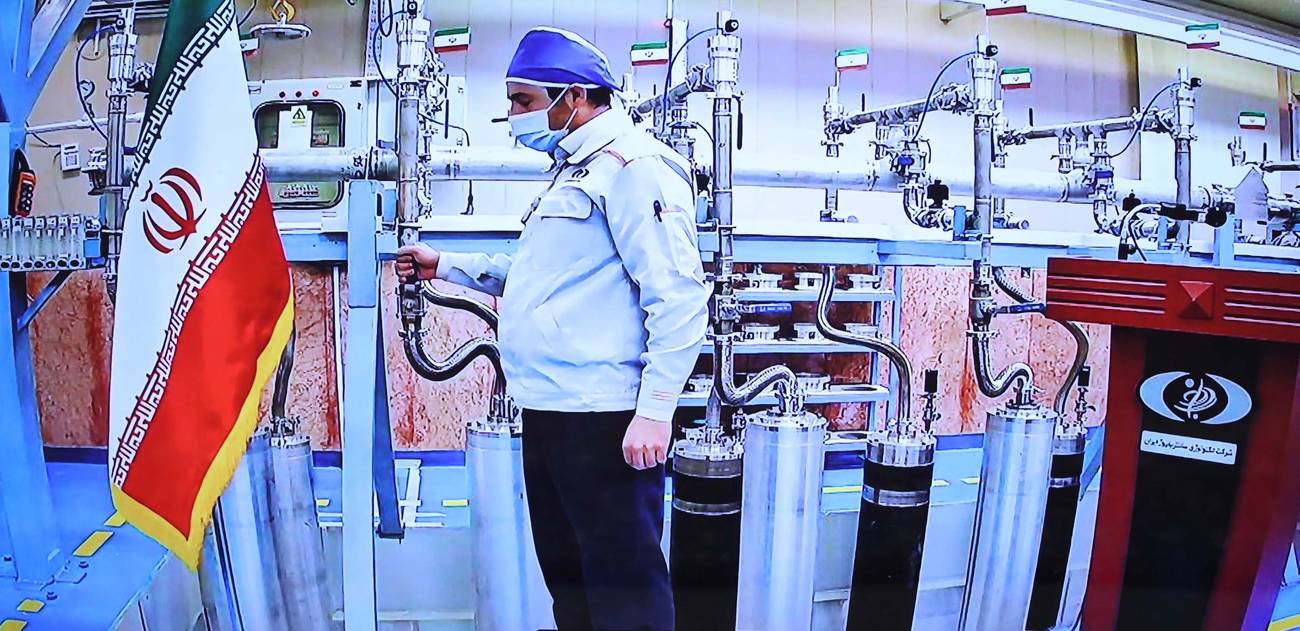 W Zlocie Grunwaldzkim, zorganizowanym 16-17 lipca 1960 r. w miejscu bitwy z Krzyżakami, według oficjalnych danych uczestniczyło 200 tys. ludzi (Fot. Stanisław Dąbrowiecki/PAP)
W Zlocie Grunwaldzkim, zorganizowanym 16-17 lipca 1960 r. w miejscu bitwy z Krzyżakami, według oficjalnych danych uczestniczyło 200 tys. ludzi (Fot. Stanisław Dąbrowiecki/PAP)
 Krzyżak, czyli hitlerowiec. Bitwa pod Grunwaldem była żelaznym punktem antyniemieckiej propagandy PRL
Krzyżak, czyli hitlerowiec. Bitwa pod Grunwaldem była żelaznym punktem antyniemieckiej propagandy PRL
Krzysztof Tarka
Na plakacie propagandowym z 1945 r. obok dwóch czarnych wron są dwa hełmy: krzyżacki i hitlerowski. A także hasła: “Grunwald 1410”, “Berlin 1945”.
.
Zwycięstwo nad zakonem krzyżackim pod Grunwaldem 15 lipca 1410 r. to jedno z najważniejszych wydarzeń w historii Polski i istotny element naszej narodowej tożsamości. Do ukształtowania grunwaldzkiej tradycji w największym stopniu przyczyniły się: średniowieczny dziejopis Jan Długosz, obraz Jana Matejki “Bitwa pod Grunwaldem” (1878) oraz powieść Henryka Sienkiewicza “Krzyżacy” (1900). A po II wojnie światowej polityka historyczna władz PRL.
Nagie miecze na orderze
Komuniści po Grunwald sięgnęli już w czasie wojny.
Wykorzystali go jako symbol “odwiecznych” zmagań z Niemcami oraz jedności Słowian i tryumfu świata słowiańskiego nad germańskim.
Pamięć o bitwie stała się narzędziem propagandy historycznej i politycznej agitacji, a także uwiarygodnienia się w społeczeństwie.
Grunwald komuniści wykorzystywali w różnych kontekstach i aranżacjach. Braterstwo broni z Armią Czerwoną, przedstawianą jako naturalny sojusznik i sprzymierzeniec Polski, symbolizować miały trzy pułki smoleńskie uczestniczące w boju z Krzyżakami. Żołnierze dywizji kościuszkowskiej, utworzonej w 1943 r. w Związku Sowieckim, składali przysięgę 15 lipca w rocznicę bitwy, a uroczystość rozpoczęła msza polowa, po której chór wojskowy odśpiewał pieśń rycerstwa polskiego – “Bogurodzicę”.
Jednym z najwyższych odznaczeń wojskowych w PRL był Order Krzyża Grunwaldu ustanowiony w końcu 1943 r. Jego dopełnieniem była Odznaka Grunwaldzka wręczana uczestnikom walk z Niemcami. Order i odznakę łączyła symbolika – dwa nagie miecze, które przed bitwą heroldowie wielkiego mistrza Urlicha von Jungingena wręczyli królowi polskiemu Władysławowi Jagielle i wielkiemu księciu litewskiemu Witoldowi. Po bitwie miecze stały się symbolem zwycięstwa nad Krzyżakami i zyskały znaczenie insygniów królewskich. W połowie lat 70. wizerunek Krzyża Grunwaldu znalazł się na 50-złotowym banknocie.
W propagandowym przekazie zakon krzyżacki stał się pierwowzorem Trzeciej Rzeszy, a żołnierze Wehrmachtu współczesnymi Krzyżakami. Zdarzało się i odwrotnie, że Krzyżaków określano mianem “średniowiecznych hitlerowców”.
Wzywając do walki z Niemcami, komuniści zapowiadali zgotowanie im drugiego Grunwaldu. Tylko jedność państw słowiańskich miała powstrzymać niemiecką ekspansję i doprowadzić do zwycięstwa nad odwiecznym wrogiem.
Do symboliki grunwaldzkiej nawiązuje znany plakat propagandowy Tadeusza Trepkowskiego z 1945 r. przedstawiający wrony oraz dwa hełmy: krzyżacki i hitlerowski, a także hasła: “Grunwald 1410”, “Berlin 1945”.
Zaorany kamień
Gdy po wojnie Polsce przypadła m.in. część Prus Wschodnich, władze zapowiadały przekształcenie leżącego na uboczu Grunwaldu w nowoczesne miasto młodzieży. Miało się też stać miejscem pielgrzymki każdego dorosłego obywatela. Te zapowiedzi nigdy nie zostały zrealizowane.
15 lipca 1945 r. zorganizowano natomiast pierwsze uroczystości grunwaldzkie na polu bitwy. Choć nie była to jej okrągła rocznica, to obchodom nadano dużą rangę. Były to pierwsze po wojnie tak wielkie uroczystości z udziałem najwyższych władz. Wzięli w nich udział: prezydent Krajowej Rady Narodowej Bolesław Bierut, premier Tymczasowego Rządu Jedności Narodowej Edward Osóbka-Morawski i minister obrony marszałek Michał Rola-Żymierski oraz ambasadorzy Związku Sowieckiego i Francji. Głównym punktem obchodów było wmurowanie kamienia węgielnego pod pomnik zwycięstwa i jedności narodów słowiańskich. Miejsca tego w żaden sposób nie oznaczono i rok później nikt już nie pamiętał, gdzie złożono ów “kamień”, ponieważ pole zostało zaorane przez miejscowego rolnika. Pomnik wzniesiono dopiero 15 lat później.
Rocznica bitwy czczona była również w następnych latach, ale władze centralne obchodami już się tak nie interesowały, uroczystości nabrały lokalnego charakteru. Najważniejszym świętem w PRL stało się przypadające tydzień później – 22 lipca – Narodowe Święto Odrodzenia Polski (lokalne władze często łączyły obie uroczystości).
Po utworzeniu w 1949 r. NRD krytykowanie Krzyżaków stało się kłopotliwe. Również afirmowanie średniowiecznej bitwy kłóciło się z głoszonymi przez komunistów ideami nowoczesności i postępu.
Biały płaszcz Adenauera
Organizując uroczystości grunwaldzkie, komuniści manifestowali przywiązanie do tradycji narodowych. Wykorzystując nośną wówczas antyniemiecką retorykę, kreowali się na obrońców polskiej racji stanu. Służyła temu przede wszystkim teza o powrocie na historyczne ziemie piastowskie (Ziemie Odzyskane), co rządzący przedstawiali jako akt sprawiedliwości dziejowej. Wobec knowań (rzeczywistych czy domniemanych) zachodnioniemieckich “odwetowców” i “rewizjonistów” z Herbertem Hupką i Herbertem Czają, liderami środowisk wypędzonych, na czele propaganda przekonywała, że gwarantem utrzymania nabytków terytorialnych na zachodzie i północy są sojusz ze Związkiem Radzieckim i rządy komunistów w Polsce.
Związek między Krzyżakami i zachodnioniemieckimi faszystami i rewizjonistami uwiarygodniać miało przyjęcie w 1958 r. przez kanclerza RFN Konrada Adenauera honorowego członkostwa zakonu krzyżackiego.
Jeszcze kilkadziesiąt lat później na propagandowym plakacie z okresu stanu wojennego przedstawiono Adenauera w białym płaszczu z czarnym krzyżem. Towarzyszyli mu rycerz zakonny na koniu i prezydent USA Ronald Reagan w kowbojskim stroju i z rewolwerem w ręku (Reagan jako aktor grał w westernach, była to też aluzja do stylu jego rządów jako prezydenta). Plakat nosił nieco mylący tytuł “Z mroków średniowiecza”. Jego wymowę podkreślał dopisek: “Krucjata przeciwko Polsce”.
Monument i superprodukcja
Obchody grunwaldzkie wróciły na pierwszy plan w 1960 r., w 550. rocznicę bitwy, inaugurując jubileusz tysiąclecia państwa polskiego. 16 lipca na uroczystości i Zlot Grunwaldzki przybyli: I sekretarz KC PZPR Władysław Gomułka, premier Józef Cyrankiewicz i przewodniczący Rady Państwa Aleksander Zawadzki. Młodzież powitała ich brawami, wiązankami kwiatów i gromkim “Sto lat”. Jeden z harcerzy zawiązał Gomułce chustę na szyi, a rozluźniony towarzysz “Wiesław” rozmawiał z młodzieżą w słomkowym kapeluszu na głowie.
W głównych uroczystościach – w niedzielę 17 lipca – według oficjalnych danych uczestniczyło 200 tys. osób, głównie młodzież i żołnierze. Nawet jeśli w rzeczywistości było ich mniej, to niewątpliwie masowy udział w obchodach miał być wyrazem poparcia społeczeństwa dla polityki władz PRL i integrować je wokół antyniemieckiej symboliki. W uroczystościach wzięły też udział delegacje ze Związku Sowieckiego i Czechosłowacji, choć ich ranga nie była wysoka.
Centralnym punktem było odsłonięcie pomnika Zwycięstwa Grunwaldzkiego, na który składa się granitowy obelisk z wykutymi twarzami rycerzy i jedenaście 30-metrowych masztów symbolizujących sztandary polskich i litewsko-ruskich chorągwi. U podstawy pomnika złożono cztery urny z ziemią z blisko stu miejsc walk z Niemcami, począwszy od bitwy pod Cedynią w 972 r.
Aleksander Zawadzki, mając na myśli Niemców z RFN (a właściwie z NRF, jak wówczas pisano), mówił: “Niech będzie to pomnik przestrogi dla agresora, który ważyłby się sięgnąć po ludność tej ziemi, zagrozić niepodległości Polski oraz jej przyjaciołom i sojusznikom”. A Gomułka stwierdził:
“Wilcza natura imperializmu niemieckiego nie zmieniła się od czasów Ulricha von Jungingena do czasów Konrada Adenauera”.
Następnie tysiące młodych Polaków złożyło ślubowanie na wierność partii. W górę wzbiło się 30 tys. gołębi, grzmotnęły salwy armatnie. Część oficjalną zakończyła parada lotnictwa wojskowego i odśpiewanie “Międzynarodówki”.
Po południu w olsztyńskim kinie Polonia odbył się zamknięty pokaz filmu “Krzyżacy” Aleksandra Forda. Ta pierwsza polska superprodukcja do kin trafiła 1 września, w rocznicę wybuchu II wojny światowej. “Krzyżacy” stali się najpopularniejszym filmem w historii polskiej kinematografii. W ciągu pierwszych czterech miesięcy obejrzało go 5 mln widzów, a do 1988 r. ponad 32 mln.
Beton grunwaldzki
Kolejnych rocznic Grunwaldu nie obchodzono już z takim rozmachem jak w 1960 r. Dominowały zloty harcerskie. Pośrednią formą czczenia pamięci Grunwaldu było mianowanie 15 lipca 1968 r. przez senat Wyższej Szkoły Rolniczej w Olsztynie 16 nowych docentów tej uczelni. Pamięć o bitwie grunwaldzkiej wciąż jest obecna w przestrzeni publicznej.
Chyba każde miasto w Polsce ma ulicę, plac czy most Grunwaldzki. Imię Grunwaldu nadawano szkołom, kinom, ośrodkom kultury czy drużynom harcerskim.
Podpisanie w grudniu 1970 r. układu o normalizacji stosunków z RFN osłabiło akcenty antyniemieckie w propagandzie PRL. Nowy “wódz” Edward Gierek nie przywiązywał też tak wielkiej wagi do kwestii historycznych jak jego poprzednik.
W 1976 r. odbudowany został pomnik Grunwaldzki w Krakowie, wysadzony w powietrze przez Niemców w końcu listopada 1939 r. Jego pierwsze odsłonięcie w 1910 r. przekształciło się w wielką manifestację patriotyczną. Fundatorem monumentu był wybitny pianista (w przyszłości premier) Ignacy Jan Paderewski, a autorem wileński rzeźbiarz Antoni Wiwulski. Centralną postacią pomnika jest król Jagiełło na koniu. Po wykonaniu odlewu 16 października 1976 r. pomnik stanął na starym miejscu.
W wybiórczy sposób do tradycji grunwaldzkiej odwoływało się Zjednoczenie Patriotyczne “Grunwald”. Organizacja utworzona wiosną 1981 r. skupiała zwolenników idei narodowego komunizmu. Jej działacze wywodzący się z partyjnego betonu byli zwolennikami rozprawienia się z “Solidarnością”. Narodowo-patriotyczna retoryka Zjednoczenia “Grunwald” przeplatana elementami marksizmu-leninizmu oraz hasłami antysemickimi i antyniemieckimi sprawiła, że organizacja pozostała marginalna.
Piknik na polu bitwy
W latach 80. symbolikę Grunwaldu próbowała wykorzystać ekipa gen. Wojciecha Jaruzelskiego. Pod patronatem proreżimowego Patriotycznego Ruchu Odrodzenia Narodowego w 1984 r. utworzony został Społeczny Komitet Grunwaldzki, a rok później Ogólnopolski Komitet Grunwaldzki. Oba komitety głosiły potrzebę kultywowania pamięci o bitwie. Apelując do uczuć narodowych i patriotycznych Polaków, rządzący chcieli wzmocnić słabnący gwałtownie autorytet władzy. Komuniści, urządzając przez dziesięciolecia obchody grunwaldzkie, zawłaszczyli pamięć o bitwie, zapewne dlatego nie odwoływały się do niej środowiska opozycyjne.
Tradycję grunwaldzką w starym stylu Jaruzelski próbował reanimować jeszcze raz już jako prezydent RP, biorąc udział w obchodach 580. rocznicy bitwy w 1990 r. Dziesięć lat później media doniosły o planach ponownej ekranizacji “Krzyżaków”. Miały powstać nawet dwa filmy fabularne, ostatecznie nie powstał żaden. Symbolika grunwaldzka (krzyżacka) wykorzystana została natomiast w reklamie piwa i kleju do płytek.
Ostatnie wielkie uroczystości na polu grunwaldzkim odbyły się w lipcu 2010 r. z okazji 600-lecia bitwy. Przemówienia wygłosili prezydenci Polski Bronisław Komorowski i Litwy Dalia Grybauskaite. Obchody pozbawione były jednak akcentów propagandowych i politycznych. Zniknęła też dawna pompa, sztuczna celebra. Impreza przybrała charakter festynu – znany sprzed lat wyreżyserowany spektakl propagandowy zastąpił radosny, rodzinny piknik. Najważniejszym wydarzeniem, które przyciągnęło tłumy widzów (szacuje się, że około 150 tys.), była inscenizacja bitwy.
Czy Grunwald całkowicie się już skomercjalizował? Czy patriotyczne przesłanie na stałe zastąpiła rozrywka i zabawa?
Współcześnie grupy rekonstruktorów i miłośników średniowiecza stały się “żywymi” nośnikami tradycji grunwaldzkiej. Taka forma upamiętniania wydarzeń historycznych przyczynia się do ich popularyzacji, a więc podtrzymuje i utrwala pamięć zbiorową.
Zawartość publikowanych artykułów i materiałów nie reprezentuje poglądów ani opinii Reunion’68,
ani też webmastera Blogu Reunion’68, chyba ze jest to wyraźnie zaznaczone.
Twoje uwagi, linki, własne artykuły lub wiadomości prześlij na adres:
webmaster@reunion68.com




